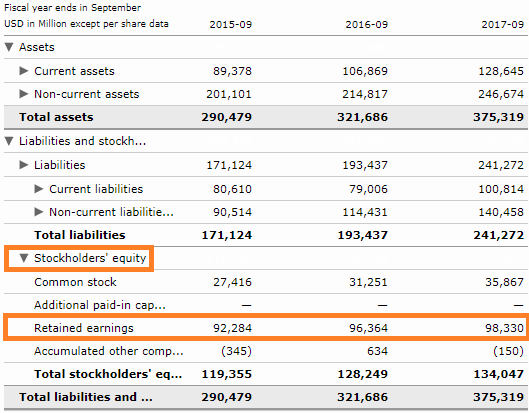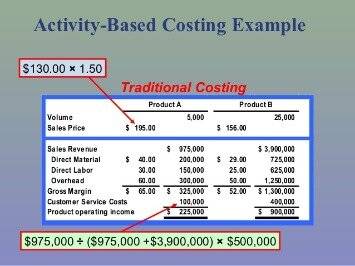1 9: Income Statements for Manufacturing Companies Business LibreTexts
- Home
- 1 9: Income Statements for Manufacturing Companies Business LibreTexts

Rootstock has purpose-built features for real-time inventory management for manufacturers. What’s important to recognize is how inventory valuations and methods impact COGS and COGM for accounting for manufacturing. Since financials are reported periodically, inventory levels will change over time and impact COGS and COGM. For example, in February, a manufacturer may produce 1,000 widgets but only sell 925 widgets. In that case, finished goods inventory levels rose by 75 boxes but inventories of incomplete items may or may not have been changed. Inventory covers the raw materials, partially completed goods, or other goods that have been manufactured but have not yet been sold.
- According to the complaint, Rite Aid executives committed financial fraud in several areas, one of which involved inventory.
- And the efficiency with which you perform accounting for manufacturing directly impacts your bottom line.
- As most organisations in this field will produce a wide range of items, business leaders must work out the cost of their products and maximise their revenue.
- A direct cost is an expense that you can easily trace to product manufacturing processes.
This will result in you having better insights into what everything costs to manufacture and how much you should charge for the items you’re making. This will help to identify opportunities to improve efficiencies companywide, drive revenue and increase profit. Finished items and your company’s items-in-progress should also contribute to manufacturing overhead costs. C This is actual manufacturing overhead for the period and includes indirect materials, indirect labor, factory rent, factory utilities, and other factory-related expenses for the month.
Activity-based Costing
Because that directly affects your tax liability, the IRS requires that you use specific methods to calculate both numbers. However, manufacturing accounting software can automate a significant portion of this responsibility. You or an accountant should still perform reconciliations to confirm the accuracy of your financial records, but it’s much easier than doing everything by hand. Bookkeeping is one of the most time-consuming aspects of manufacturing accounting. Maintaining accurate and organized records of all the transactions and costs involved in production can be incredibly laborious if you do it manually.

This will help you identify your most profitable product lines and customers and improve your budgeting – which will help your business to grow. If you want to refine your production process and automate aspects of your business, accurate costing information helps you identify wasteful costs passed on to the customer or absorbed within the company. As you streamline manufacturing processes to eliminate waste and shorten the time between receiving and orders, you can also streamline your accounting processes and use them to gather relevant operating information.
Job Costing
While you probably won’t handle all your business’s accounting personally, you still need to understand it. A lot of manufacturing accounting revolves around creating records that managers can use to inform business decisions. The accounting for a manufacturing business deals with inventory valuation and the cost of goods sold.
- In production management, manufacturing cost accounting seeks to determine the cost of goods sold to better understand revenue and profitability at both the business level and the individual product level.
- By analyzing your manufacturing processes, identifying cost categories, organizing accounts by function, and incorporating cost centers, you can tailor your chart of accounts to suit your specific needs.
- Whether you possess years of experience in the field or are just beginning to navigate its complexities, these insights will help you ensure your financial operations run smoothly.
- Depreciation is a way to financially account for the decrease in value of a physical asset over time.
By having a safety net in terms of spend, it takes the pressure off when making an investment. You should look at profits from the previous year, and income / expenditure that is certain to take place over the coming months. If incomings and outgoings are recorded inaccurately (or aren’t recorded at all), it will lead you to make unguided business decisions.
HOW IS MANUFACTURING ACCOUNTING DIFFERENT?
In addition to this, manufacturing involves an increased amount of inventory management as tracking costs and cash flow has an even higher significance in this field. To ensure the ongoing success of your chart of accounts, we have shared some best practices for managing it. Throughout this guide, we have emphasized the importance of a well-structured chart of accounts in the manufacturing industry. By implementing a carefully designed chart of accounts, you can streamline your financial processes, gain better visibility into your costs, and make informed decisions to drive your business forward.
Also known as factory overhead, manufacturing overhead refers to the cost of maintaining and operating your production facilities. Overhead costs include expenses like factory rent, utilities, and administrative costs. It helps facilitate analysis and efficiency refinement for businesses that revolve less around each unit and more around repetitive procedures. Variance analysis, which involves comparing your standard costs to your actual expenses, is a great way to reveal areas of overspending, improve production efficiency, and increase cash flow.
Work-in-Progress Inventory Accounts
It serves as a roadmap that guides you through the complex world of accounting, helping you categorize and track your income, expenses, assets, and liabilities. Without a properly organized chart of accounts, it’s like trying to navigate through a dense forest without a map—you’re bound to get lost and encounter numerous obstacles along the way. Having a manufacturing account how to start an online bookkeeping business includes increased efficiency, better cash flow management, informed decision-making, and improved financial planning. Manufacturing accounts can provide businesses with valuable information about their production costs, inventory levels, and sales. A Manufacturing account can help businesses become more efficient by tracking production costs and inventory levels.
Manufacturers take a unique approach to accounting because they don’t just ship, sell, and service goods – they create goods. Manufacturing accounting also comes with its own set of challenges; different methods for determining production, labor, and inventory costs; different valuation methods for that inventory; and on and on. Production costing methods organize your cost accounting records to help management make decisions.
Have any question or want a free estimate?
+971 (4) 258 1815
Our service provided areas
Scotla, Mastra, Lomosta, Twista
ABOUT US
We are with you, right from your thought for storage requirements, to the delivery and installation. Our custom design and built, based on your specific storage material, which is scientifically proposed with load calculation and material selection. We optimize your storage area to its maximum cubic volume, with advanced operational mechanism.
QUICK LINKS
Service Provided
Contact Info
Address : Warehouse 4, Industrial Area 4, Behind Galadari Driving School, Al Qusais, Dubai, UAE
Phone : +971 4 2211 771
Phone : +971 4 354 7852
Email : [email protected]
Opening Hours : 9:00am to 6:00pm
